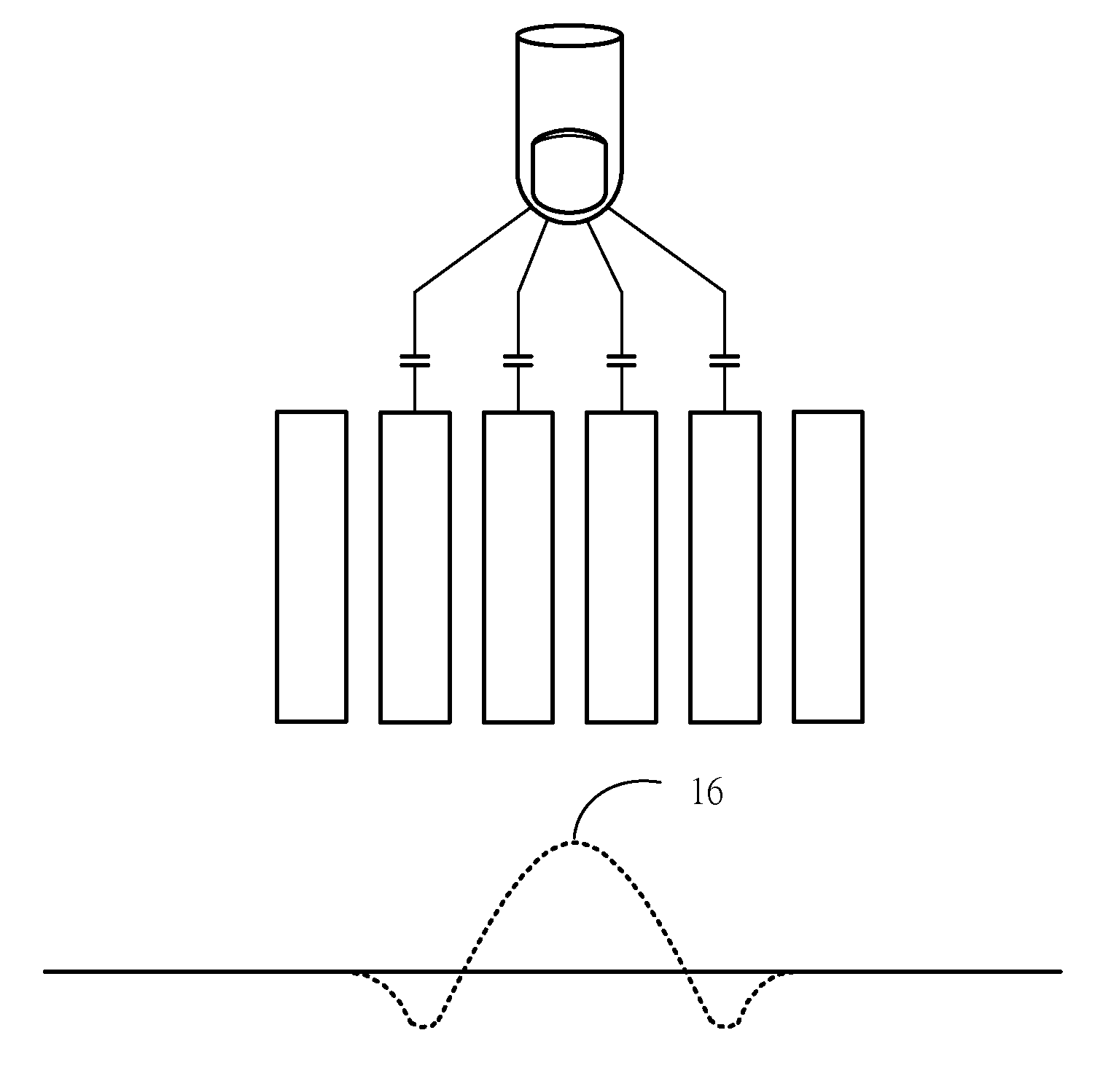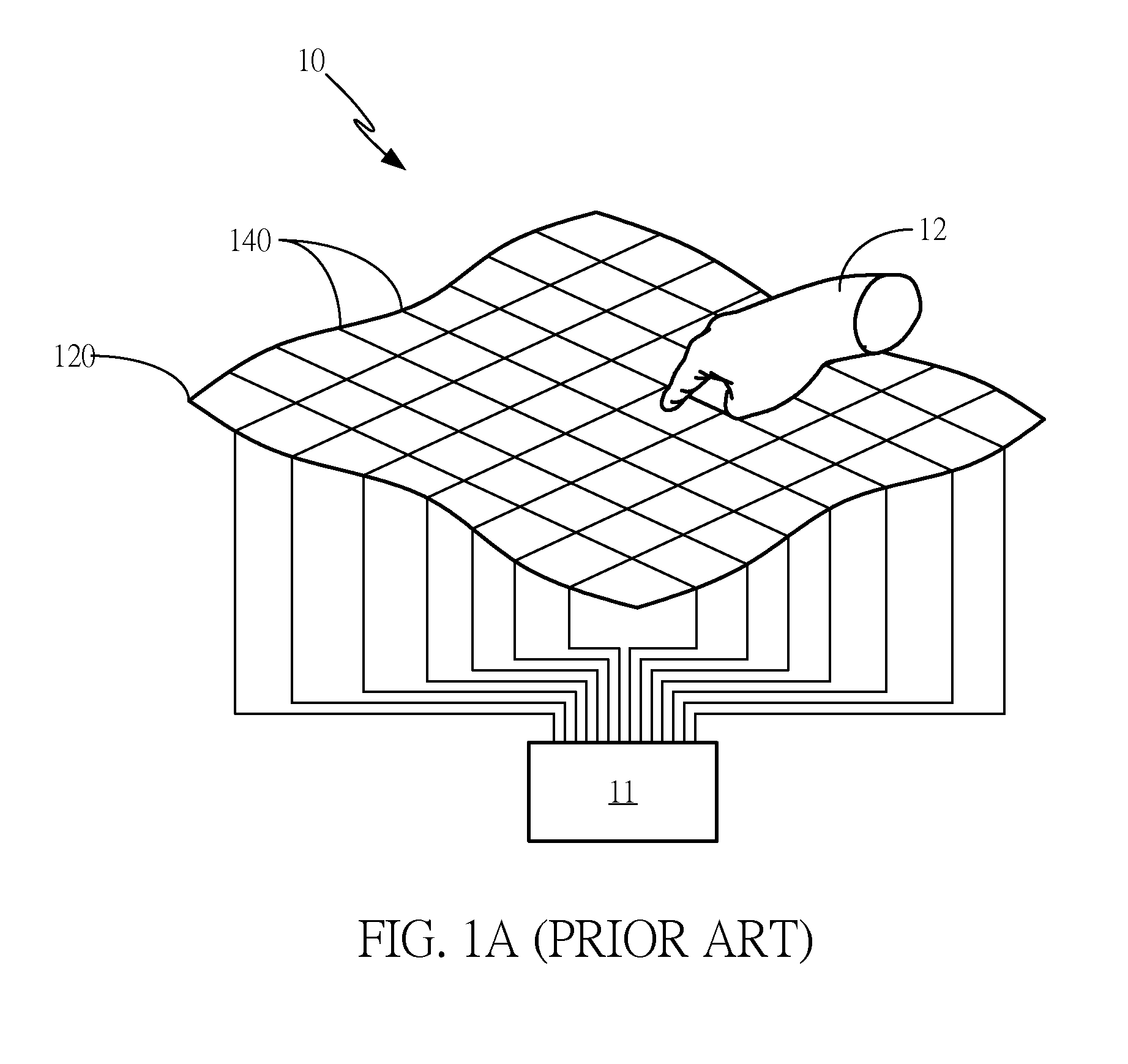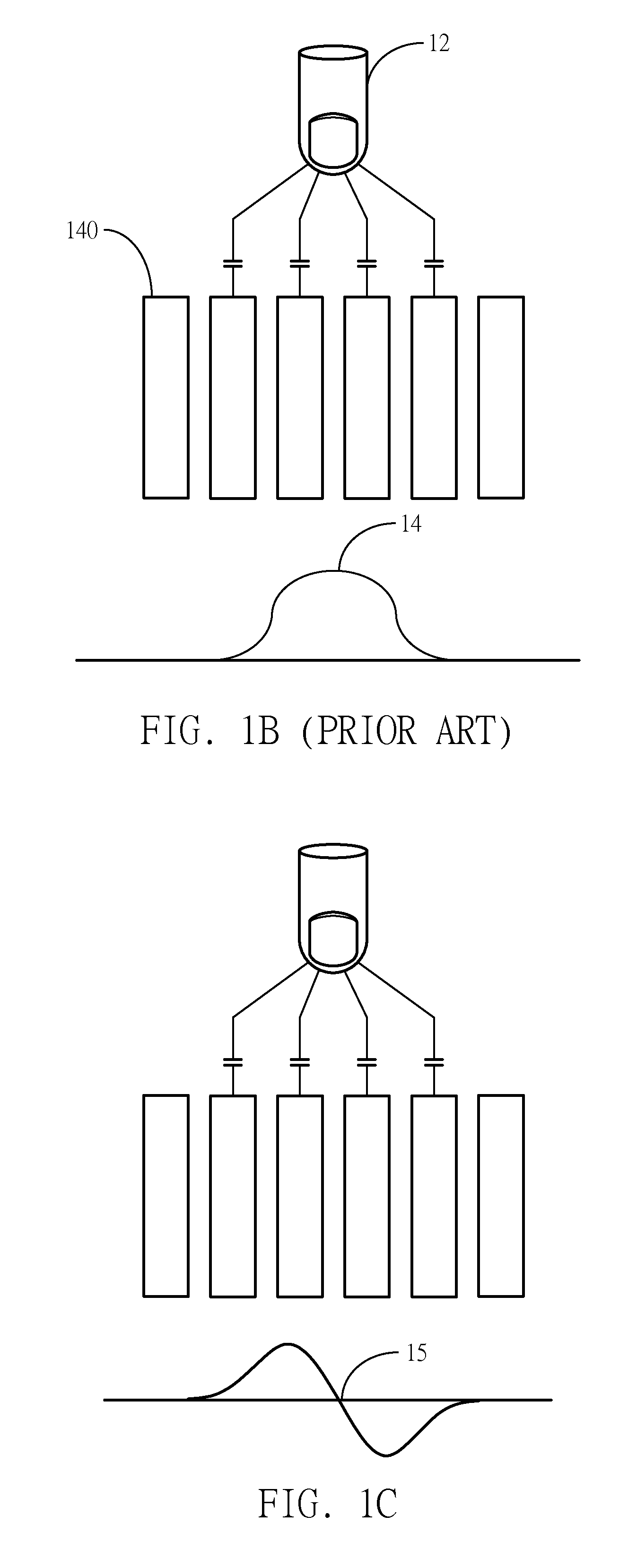Method and device for analyzing two-dimension sensing information
a two-dimensional sensing and information technology, applied in capacitance measurement, instruments, computing, etc., can solve the problems of misjudgment of touch location, signal directly from the sensor is not suitable for touch determination, etc., and achieve the effect of reducing noise interference and effectively reducing noise interferen
- Summary
- Abstract
- Description
- Claims
- Application Information
AI Technical Summary
Benefits of technology
Problems solved by technology
Method used
Image
Examples
first embodiment
[0170]In the present invention, a method for analyzing 2D sensing information according to the best mode of the present invention is provided as shown in FIG. 5. First, in step 510, a first 2D sensing information is obtained. Next, in step 520, the first 2D sensing information is analyzed to determine each touch related sensing information with inner low values within outer high values. Thereafter, in step 530, the first 2D sensing information is analyzed to determine each touch related sensing information with inner higher values within outer low values. As described earlier, the analysis can be an image segmentation method, such as the watershed algorithm, a connected component labeling or other ways of determining touch related sensing information, for example, other methods for analyzing 2D sensing information capable of distinguishing hills, valleys or basins. When the first 2D sensing information is constituted by a plurality dual differences, the periphery of the valley, basi...
second embodiment
[0172]In an example of the present invention, steps 510 to 530 can be performed by controller 160 or host 170. The first 2D sensing information can be generated by a plurality of sensors of the sensing device, or converted from second 2D sensing information generated by the signals of a plurality of sensors of the sensing device. Controller 160 provides 1-D sensing information each time it senses with the sensors. A plurality of 1-D sensing information constitute the first or second 2D sensing information, wherein the first or second 2D sensing information can be generated by controller 160 or host 170. Further, conversion of valleys, basins or multi-peak hills into signal values or one-peak hill can also be performed by controller 160 or host 170. Other details of the present embodiment have been disclosed in descriptions above and will not be repeated. In the present invention, a method of analyzing 2D dual-differential sensing information is provided as shown in FIG. 7A. First, i...
third embodiment
[0180]In the present invention, a method of analyzing 2D differential sensing information is provided as shown in FIG. 8A. First, in step 810, a 2D differential sensing information is obtained, including a plurality of differences. Then, in step 820, all negative values of the 2D differential sensing information are converted into positive values to generate a 2D sensing information. Next, in steps 830 and 840, the 2D differential sensing information is analyzed to determine each touch related sensing information with inner low values within outer high values, such as a valley or a basin, or touch related sensing information with inner higher values within outer low values, such as a hill.
[0181]In addition, analyzed touch related sensing information can be provided using geometric information to represent geometric figures, such as circle, oval, rectangle, polygon etc. For example, a center of circle and radius can be used to represent a circle, two focii and the sum of distances of...
PUM
 Login to View More
Login to View More Abstract
Description
Claims
Application Information
 Login to View More
Login to View More - R&D
- Intellectual Property
- Life Sciences
- Materials
- Tech Scout
- Unparalleled Data Quality
- Higher Quality Content
- 60% Fewer Hallucinations
Browse by: Latest US Patents, China's latest patents, Technical Efficacy Thesaurus, Application Domain, Technology Topic, Popular Technical Reports.
© 2025 PatSnap. All rights reserved.Legal|Privacy policy|Modern Slavery Act Transparency Statement|Sitemap|About US| Contact US: help@patsnap.com



